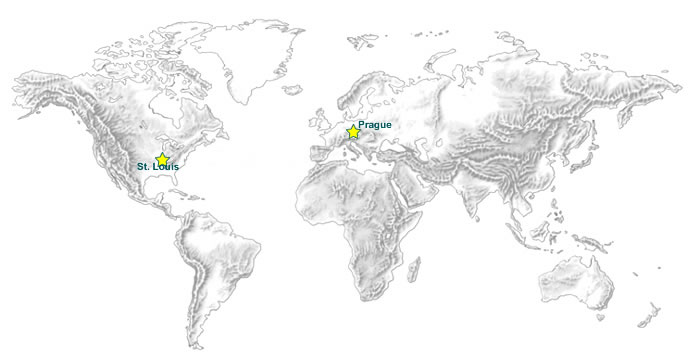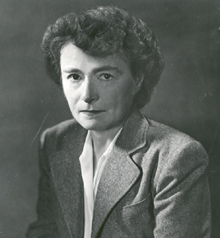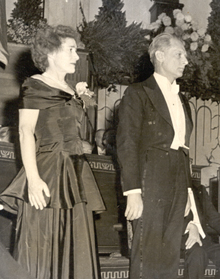Gerty T. Cori (1896-1957)
Gerty Cori, the first American woman to win the Nobel Prize in Physiology or Medicine, was born in Prague, then part of the Austro-Hungarian Empire, in 1896. Educated by tutors and in private schools, Gerty Theresa Radnitz decided at the age of sixteen to study medicine. She entered the Realgymnasium at Tetschen, from which she graduated in 1914, and then proceeded to the Medical School of the German University of Prague. While in medical school, Gerty met Carl Ferdinand Cori, a fellow student who shared both her loves of skiing and mountain climbing and her interest in laboratory research. In 1920 the two published the results of their first research collaboration, received their medical degrees, and married each other.
Gerty Cori’s first research position was as an assistant in the Karolinen Children’s Hospital in Vienna. In 1922 Carl Cori emigrated to the United States to join the staff of the New York State Institute for the Study of Malignant Diseases in Buffalo, New York. Gerty Cori emigrated a few months later, starting as an assistant pathologist at the Institute and later rising to assistant biochemist. In 1928 the Coris became naturalized U.S. citizens.
In 1931 Carl Cori accepted the position of chairman of the Department of Pharmacology of the Washington University School of Medicine. The University rules at the time prohibited faculty appointment of two members of the same family, so Gerty Cori was hired as a research fellow in Pharmacology. In the early 1940s the Coris moved to the department of Biological Chemistry. Gerty Cori was made an associate professor of Research Biological Chemistry and Pharmacology in 1943. She was promoted to the rank of professor of Biological Chemistry in July 1947, the same year she was awarded the Nobel Prize.
The Coris began studying carbohydrate metabolism while in Buffalo and continued the research in their laboratory at Washington University. The process by which glycogen (the form in which sugar is stored in the animal body) was converted to glucose (the form in which sugar provides the body’s energy needs) was thought to be hydrolysis. However, in the 1930s the Coris demonstrated that the breakdown of glycogen involved the formation of a substance known as glucose-1-phosphate, which came to be referred to as “Cori ester.” This reaction was catalyzed by an enzyme, first isolated by the Coris and named phosphorylase, which was involved in both the synthesis and cleavage of glycogen. The pair later identified and isolated other enzymes involved in the formation and breakdown of the glycogen molecule.
In addition to the Nobel Prize in 1947, Gerty Cori was the recipient of many honors and awards. With her husband she was awarded the Midwest Award of the American Chemical Society in 1946. Gerty Cori received the St. Louis Award in 1948, the Squibb Award in endocrinology in 1947, and Garvan medal of the American Chemical Society for women in chemistry in 1948, and the sugar research prize of the National Academy of Sciences in 1950. In 1948 Cori was recognized as a Woman of Achievement in science by the Women’s National Press Club. In addition, President Truman appointed Gerty Cori to two terms as a member of the board of the National Science Foundation. Honorary degrees were awarded to Cori by Yale University, Boston University, Smith College, Columbia University, and the University of Rochester. The American Chemical Society designated the research of Gerty and Carl Cori on the metabolism of carbohydrates at The Washington University School of Medicine a National Historic Chemical Landmark on September 21, 2004.
In 1947 Gerty Cori began displaying the symptoms of myelofibrosis, a rare blood disease that affects the bone marrow. She fought the disease for ten years, refusing to give up her research until the last few months of her life. Cori died on October 26, 1957.

Related Resources:
- Gerty T. Cori Bibliography
- Images of Gerty T. Cori
- Carl F. Cori Biography
- American Chemical Society Landmark Designation
Back to Biographies


